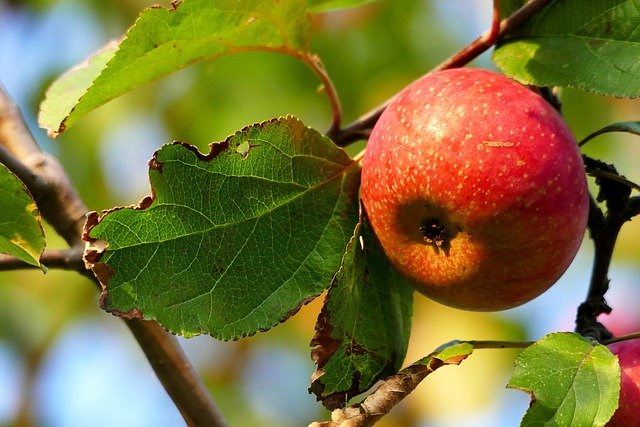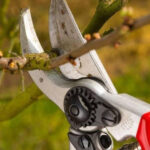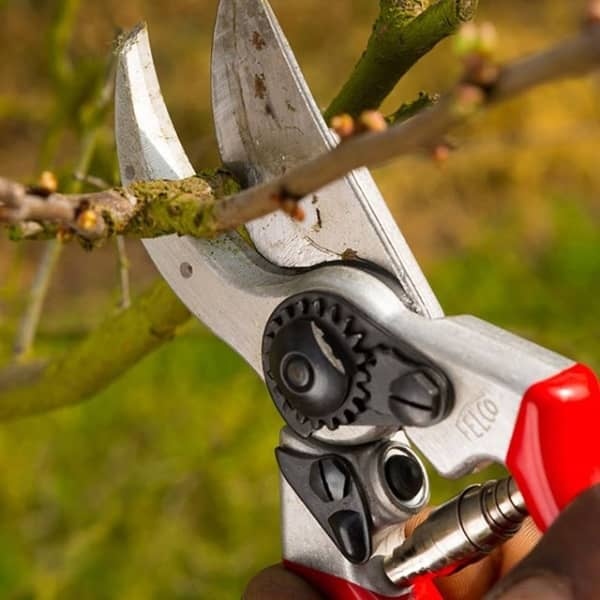We use cookies to make your experience better. To comply with the new e-Privacy directive, we need to ask for your consent to set the cookies. Learn more.
Pruning Soft Fruit Bushes
Pruning helps maintain the balance between wood and fruit as it causes dormant buds in the old wood to produce growth that will become the next fruiting wood. Getting rid of old unproductive branches is vital for disease control and to improve air circulation. It also makes fruit picking easier!
Keep all blades oiled, sharp and clean. Strong alcohol, such as surgical spirits is ideal for sterilising pruners. Make sure the tools you use are the right ones for the job – this will depend on the diameter of the wood to be cut.
Snips - These are useful for small plants, taking cuttings and deadheading. Deadheading is the practice of removing fading or dead flowers from plants. This keeps the plant looking tidy whilst encouraging more flowers to develop.
Hand pruners/Secateurs – These are one of the most used (and most lost) tools in the garden. Indispensible for a wide range of tasks from clearing brambles to pruning fruit trees and bushes. Pruners are suitable for cuts up to 2.5cm.
Gloves - protect yourself from thorns and accidental cuts.
Pruning Raspberries
Summer-fruiting - During the autumn, cut down to soil level all old canes that carried fruit during the summer. (New season canes are softer and a brighter green). Aim to leave 6-8 of the strongest new canes and remove the rest. The new canes should be spaced 10cm apart when tied-in to allow each cane as much light and air as possible.
Autumn-fruiting - Prune in late winter (February), cutting back all the canes to ground level before new growth commences. The plants will fruit on new growth.
Pruning Gooseberries
Gooseberries can become a tangled mess and susceptible to diseases if allowed to grow unchecked. When pruning gooseberry bushes the aim is to keep the centre of the plant open to air and sunshine by taking out any dead or diseased branches to make harvesting easier.
The best fruit is produced on branches that are 2-3 years old, so the first step is always to take out old wood. Always cut right down to the base, which will encourage the bush to produce strong new fruiting stems from the bottom of the plant.
Cut out any dead, diseased, damaged or dying wood – usually easy to spot by the bark’s dark colour.
To make harvest easier and to allow more air circulation; remove stems that are growing inwards. The idea is to create a goblet-shaped bush with a fairly open centre. You can also shorten the remaining branches and their side shoots by a couple of buds, which will encourage the bush to produce better quality, larger fruit in slightly smaller quantities.
Pruning Blackcurrants
Currant stems naturally grow from the ground and form a low growing bush. Pruning currant bushes is essential to stop the plants becoming overcrowded with dormant branches. Blackcurrants crop best on two-year-old stems so prune back one-year-old shoots to the next growing point to force branching. Prune out old stems at the base – these will be thicker and darker in colour.
Pruning Red & White Currants
Prune red and white currants as you would gooseberries, as they produce fruit on side-shoots made the previous year. Aim to create a well-branched, upright bush with fruiting spurs along the main stems. In winter, shorten the side-shoots to one bud. Remove shoot tips and old, unproductive wood.
General Care of Fruit Bushes
When pruning, make your cut just above and at a slant away from the bud you have selected. A slanted cut away from the bud channels water away and avoids rotting the bud. Cut too close to the bud and it will die, leave too much wood above the bud and it will die back leading to possible infection.
Apply a general NPK fertilizer in spring then mulch around the base of bushes to conserve water and reduce weed growth.
Keep bushes well-watered during dry periods, but avoid overwatering. Avoiding drought stress is especially important during fruit set and development. Apply water preferably at ground level keeping the foliage, flowers and developing fruit dry helps to reduce the risk of fungal diseases.
Birds love fruit (who can blame them) so if you want to enjoy your crop you will have to net your bushes. Bullfinches are especially fond of blackcurrant buds so you might have to net earlier than you think.
Apple Trees

Apple trees should be pruned in late winter. Avoid pruning in the autumn since this stimulates new growth at the same time the tree should be getting ready for winter. The new growth may not have a chance to harden off before cold temperatures and frost hit, which may lead to cold damage on the tree.


